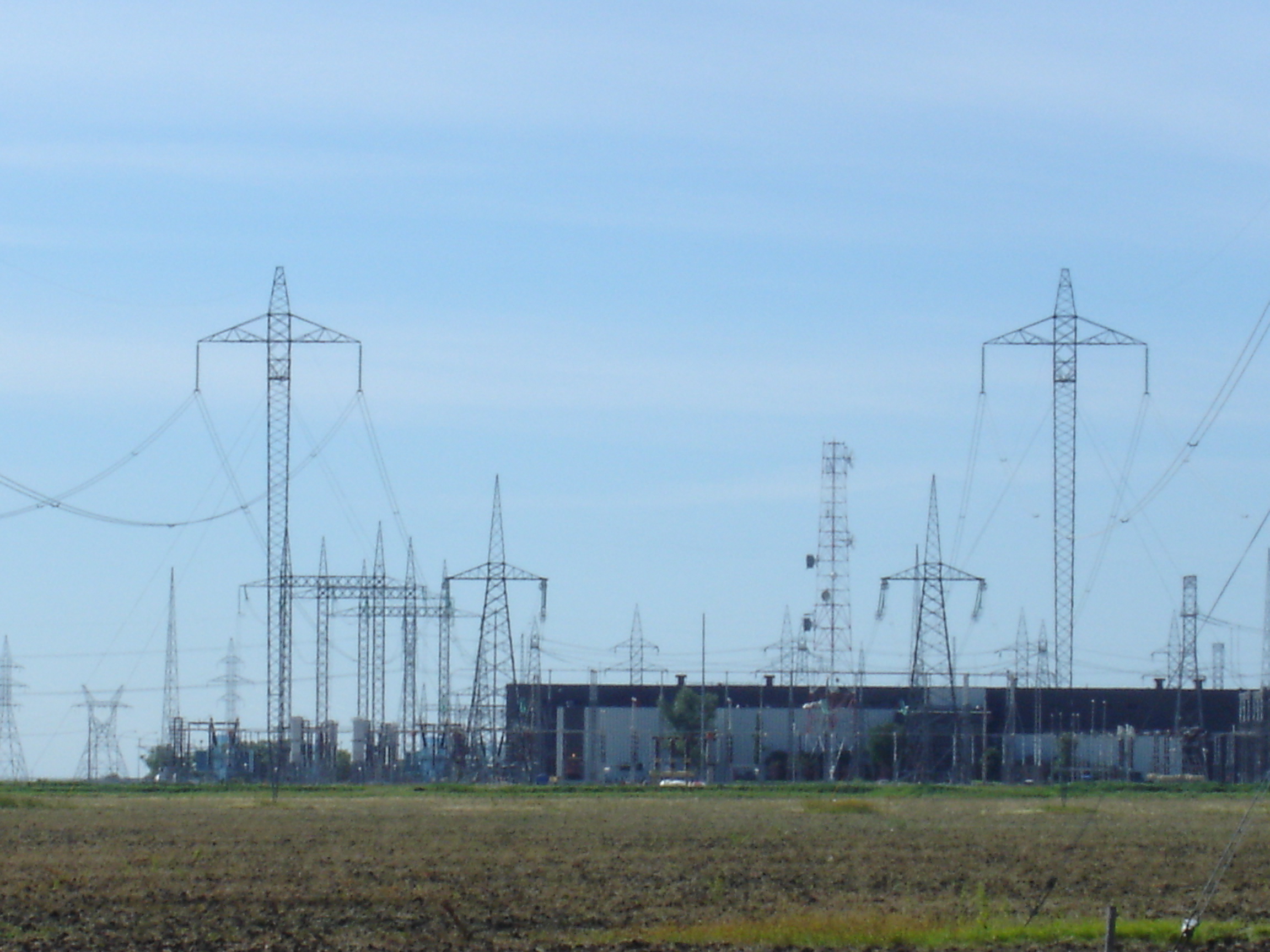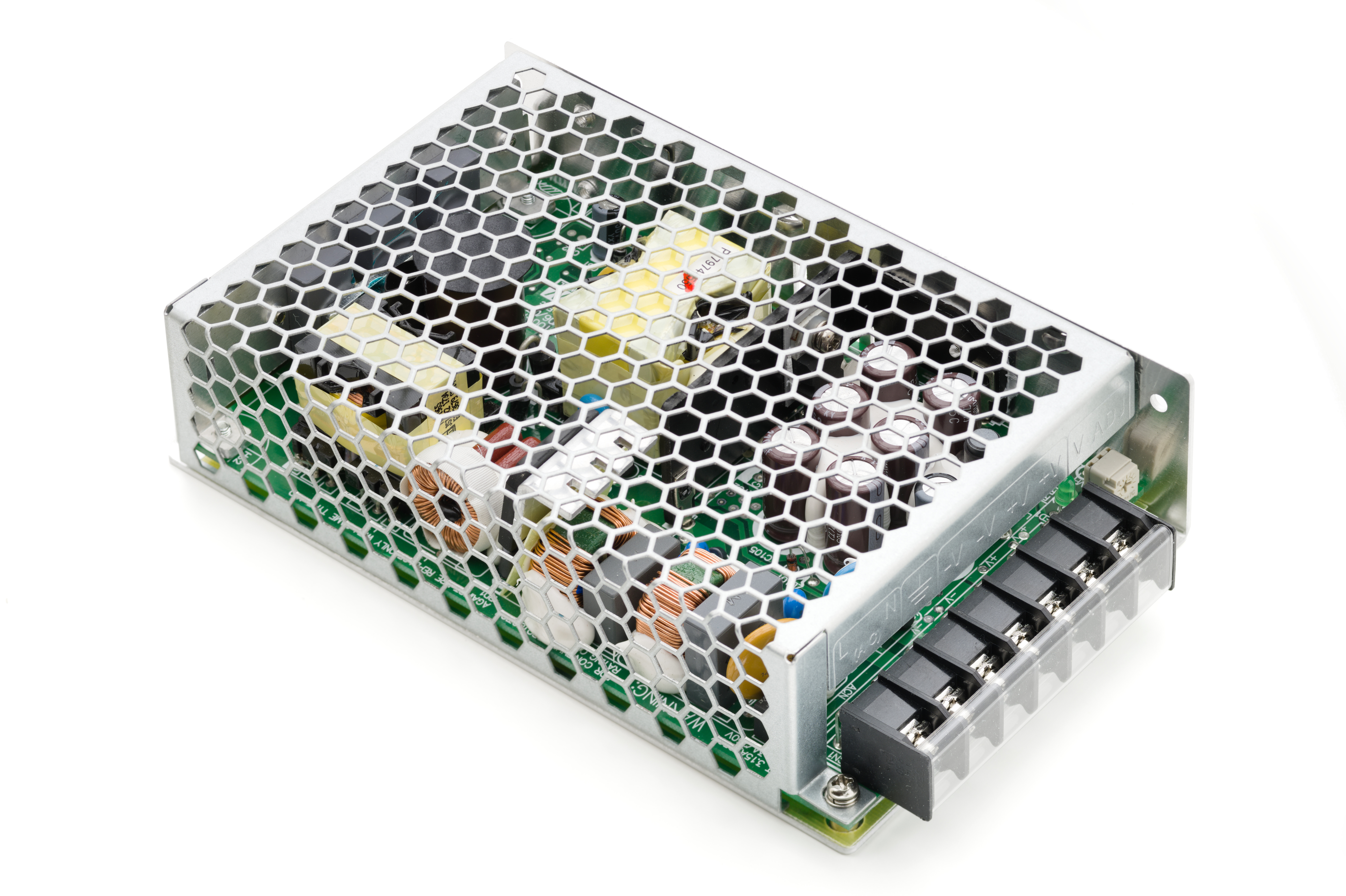|
Magnetic Amplifier
The magnetic amplifier (colloquially known as a "mag amp") is an electromagnetism, electromagnetic device for amplifying electrical signals. The magnetic amplifier was invented early in the 20th century, and was used as an alternative to vacuum tube amplifiers where robustness and high current capacity were required. World War II Germany perfected this type of amplifier, and it was used in the V-2 rocket. The magnetic amplifier was most prominent in power control and low-frequency signal applications from 1947 to about 1957, when the transistor began to supplant it. The magnetic amplifier has now been largely superseded by the transistor-based amplifier, except in a few safety critical, high-reliability or extremely demanding applications. Combinations of transistor and mag-amp techniques are still used. Principle of operation Visually a mag amp device may resemble a transformer, but the operating principle is quite different from a transformer – essentially the mag amp ... [...More Info...] [...Related Items...] OR: [Wikipedia] [Google] [Baidu] |
Electromagnetism
In physics, electromagnetism is an interaction that occurs between particles with electric charge via electromagnetic fields. The electromagnetic force is one of the four fundamental forces of nature. It is the dominant force in the interactions of atoms and molecules. Electromagnetism can be thought of as a combination of electrostatics and magnetism, which are distinct but closely intertwined phenomena. Electromagnetic forces occur between any two charged particles. Electric forces cause an attraction between particles with opposite charges and repulsion between particles with the same charge, while magnetism is an interaction that occurs between charged particles in relative motion. These two forces are described in terms of electromagnetic fields. Macroscopic charged objects are described in terms of Coulomb's law for electricity and Ampère's force law for magnetism; the Lorentz force describes microscopic charged particles. The electromagnetic force is responsible for ma ... [...More Info...] [...Related Items...] OR: [Wikipedia] [Google] [Baidu] |
Silicon Controlled Rectifier
A silicon controlled rectifier or semiconductor controlled rectifier (SCR) is a four-layer solid-state current-controlling device. The name "silicon controlled rectifier" is General Electric's trade name for a type of thyristor. The principle of four-layer p–n–p–n switching was developed by Moll, Tanenbaum, Goldey, and Holonyak of Bell Laboratories in 1956. The practical demonstration of silicon controlled switching and detailed theoretical behavior of a device in agreement with the experimental results was presented by Dr Ian M. Mackintosh of Bell Laboratories in January 1958. The SCR was developed by a team of power engineers led by Gordon Hall and commercialized by Frank W. "Bill" Gutzwiller in 1957. Some sources define silicon-controlled rectifiers and thyristors as synonymous while other sources define silicon-controlled rectifiers as a proper subset of the set of thyristors; the latter being devices with at least four layers of alternating n- and p-type ma ... [...More Info...] [...Related Items...] OR: [Wikipedia] [Google] [Baidu] |
Avionics
Avionics (a portmanteau of ''aviation'' and ''electronics'') are the Electronics, electronic systems used on aircraft. Avionic systems include communications, Air navigation, navigation, the display and management of multiple systems, and the hundreds of systems that are fitted to aircraft to perform individual functions. These can be as simple as a searchlight for a police helicopter or as complicated as the tactical system for an airborne early warning platform. History The term "avionics" was coined in 1949 by Philip J. Klass, senior editor at ''Aviation Week & Space Technology'' magazine as a portmanteau of "aviation electronics". Radio communication was first used in aircraft just prior to World War I. The first Airborne radio relay, airborne radios were in zeppelins, but the military sparked development of light radio sets that could be carried by heavier-than-air craft, so that aerial reconnaissance biplanes could report their observations immediately in case they we ... [...More Info...] [...Related Items...] OR: [Wikipedia] [Google] [Baidu] |
Kriegsmarine
The (, ) was the navy of Nazi Germany from 1935 to 1945. It superseded the Imperial German Navy of the German Empire (1871–1918) and the inter-war (1919–1935) of the Weimar Republic. The was one of three official military branch, branches, along with the and the , of the , the German armed forces from 1935 to 1945. In violation of the Treaty of Versailles, the grew rapidly during German rearmament, German naval rearmament in the 1930s. The 1919 treaty had limited the size of the German navy and prohibited the building of submarines. ships were deployed to the waters around Spain during the Spanish Civil War (1936–1939) under the guise of enforcing non-intervention in the Spanish Civil War, non-intervention, but in reality supporting the Francoist Spain, Nationalists against the Second Spanish Republic, Spanish Republicans. In January 1939, Plan Z, a massive shipbuilding programme, was ordered, calling for surface naval parity with the United Kingdom, British Royal ... [...More Info...] [...Related Items...] OR: [Wikipedia] [Google] [Baidu] |
High Voltage
High voltage electricity refers to electrical potential large enough to cause injury or damage. In certain industries, ''high voltage'' refers to voltage above a certain threshold. Equipment and conductors that carry high voltage warrant special safety requirements and procedures. High voltage is used in electrical power distribution, in cathode-ray tubes, to generate X-rays and particle beams, to produce electrical arcs, for ignition, in photomultiplier tubes, and in high-power amplifier vacuum tubes, as well as other industrial, military and scientific applications. Definition The numerical definition of depends on context. Two factors considered in classifying a voltage as high voltage are the possibility of causing a spark in air, and the danger of electric shock by contact or proximity. The International Electrotechnical Commission and its national counterparts ( IET, IEEE, VDE, etc.) define ''high voltage'' as above 1000 V for alternating current, ... [...More Info...] [...Related Items...] OR: [Wikipedia] [Google] [Baidu] |
HVDC
A high-voltage direct current (HVDC) electric power transmission system uses direct current (DC) for electric power transmission, in contrast with the more common alternating current (AC) transmission systems. Most HVDC links use voltages between 100 kV and 800 kV. HVDC lines are commonly used for long-distance power transmission, since they require fewer conductors and incur less power loss than equivalent AC lines. HVDC also allows power transmission between AC transmission systems that are not Synchronization (alternating current), synchronized. Since the power flow through an HVDC link can be controlled independently of the phase angle between source and load, it can stabilize a network against disturbances due to rapid changes in power. HVDC also allows the transfer of power between grid systems running at different frequencies, such as 50 and 60 Hz. This improves the stability and economy of each grid, by allowing the exchange of power between previously inc ... [...More Info...] [...Related Items...] OR: [Wikipedia] [Google] [Baidu] |
Traction Motors
A traction motor is an electric motor used for propulsion of a vehicle, such as locomotives, electric or hydrogen vehicles, or electric multiple unit trains. Traction motors are used in electrically powered railway vehicles (electric multiple units) and other electric vehicles including electric milk floats, trolleybuses, elevators, roller coasters, and conveyor systems, as well as vehicles with electrical transmission systems (diesel–electric locomotives, electric hybrid vehicles), and battery electric vehicles. Traction motor companies The word ''traction'' from Latin, being the agent noun of ''trahere'' "to pull" in the sense of "drawn" was used for the naming of traction engines developed circa 1870. The first experimental electric traction motor tramway of 1875 was rapidly developed internationally for city use. In the 19th century traction motor passenger car companies began to compete with the dominant citywide horse-drawn railway transportation system. Motor ... [...More Info...] [...Related Items...] OR: [Wikipedia] [Google] [Baidu] |
Hall Effect
The Hall effect is the production of a voltage, potential difference (the Hall voltage) across an electrical conductor that is wikt:transverse, transverse to an electric current in the conductor and to an applied magnetic field wikt:perpendicular, perpendicular to the current. It was discovered by Edwin Hall in 1879. The ''Hall coefficient'' is defined as the ratio of the induced electric field to the product of the current density and the applied magnetic field. It is a characteristic of the material from which the conductor is made, since its value depends on the type, number, and properties of the charge carriers that constitute the current. Discovery Wires carrying current in a magnetic field experience a mechanical force perpendicular to both the current and magnetic field. In the 1820s, André-Marie Ampère observed this underlying mechanism that led to the discovery of the Hall effect. However it was not until a solid mathematical basis for electromagnetism was system ... [...More Info...] [...Related Items...] OR: [Wikipedia] [Google] [Baidu] |
Semiconductor
A semiconductor is a material with electrical conductivity between that of a conductor and an insulator. Its conductivity can be modified by adding impurities (" doping") to its crystal structure. When two regions with different doping levels are present in the same crystal, they form a semiconductor junction. The behavior of charge carriers, which include electrons, ions, and electron holes, at these junctions is the basis of diodes, transistors, and most modern electronics. Some examples of semiconductors are silicon, germanium, gallium arsenide, and elements near the so-called " metalloid staircase" on the periodic table. After silicon, gallium arsenide is the second-most common semiconductor and is used in laser diodes, solar cells, microwave-frequency integrated circuits, and others. Silicon is a critical element for fabricating most electronic circuits. Semiconductor devices can display a range of different useful properties, such as passing current more easil ... [...More Info...] [...Related Items...] OR: [Wikipedia] [Google] [Baidu] |
Switched-mode Power Supply
A switched-mode power supply (SMPS), also called switching-mode power supply, switch-mode power supply, switched power supply, or simply switcher, is an electronic power supply that incorporates a switching regulator to electric power conversion, convert electrical power efficiently. Like other power supplies, a SMPS transfers power from a DC or AC source (often Mains electricity, mains power, see AC adapter) to DC loads, such as a personal computer, while converting voltage and Electric current, current characteristics. Unlike a linear power supply, the pass transistor of a switching-mode supply continually switches between low-dissipation, full-on and full-off states, and spends very little time in the high-dissipation transitions, which minimizes wasted energy. Voltage regulator, Voltage regulation is achieved by varying the ratio of on-to-off time (also known as duty cycle). In contrast, a linear power supply regulates the output voltage by continually dissipating power in t ... [...More Info...] [...Related Items...] OR: [Wikipedia] [Google] [Baidu] |
Stage Lighting
Stage lighting is the craft of lighting as it applies to the production of theater, dance, opera, and other performance arts. Stage Lighting Design Principle and Process Several different types of stage lighting instruments are used in this discipline. theatrecrafts' Types of Lanterns. In addition to basic lighting, modern stage lighting can also include special effects, such as Laser lighting display, lasers and fog machines. People who work on stage lighting are commonly referred to as lighting technicians or lighting designers. The equipment used for stage lighting (e.g. cabling, Salt water dimmer, dimmers, lighting instruments, contro ... [...More Info...] [...Related Items...] OR: [Wikipedia] [Google] [Baidu] |







